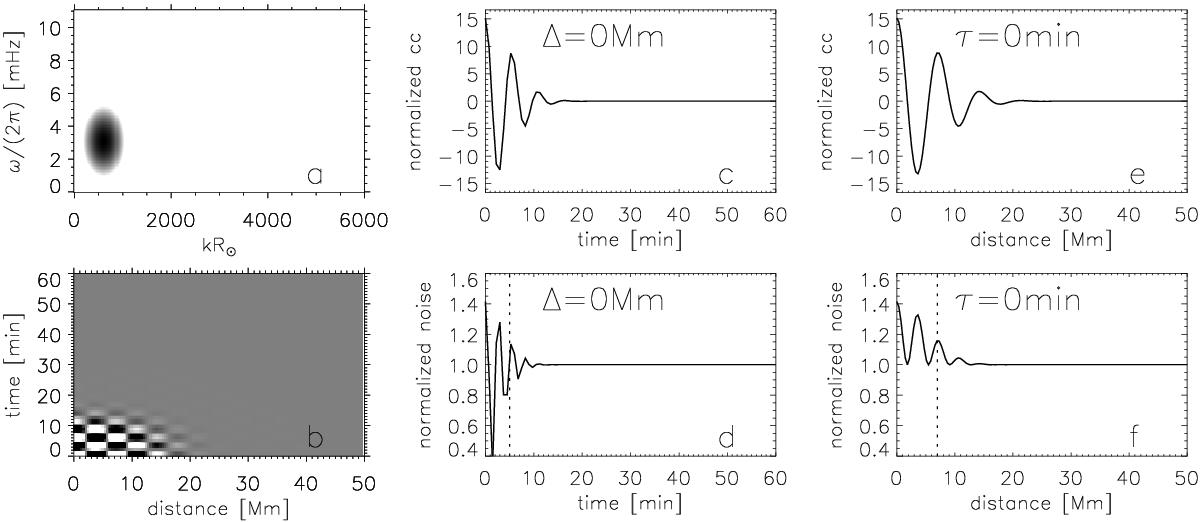Fig. 1

Examples of the power spectrum in logarithmic gray scale (Panel a)) and the expectation value of the cross-covariance function (Panel b)) in the case of the Gaussian power spectrum. In Panel a) (and the same is true in Figs. 2a and 4a), larger and smaller power is indicated by black and white, respectively. The peak of the power is located at (k0R⊙,ω0/ (2π)) = (600,3 mHz) and the peak has widths (σkR⊙,σω/ (2π)) = (100,0.5 mHz). The cuts through the expectation value of the cross-covariance function at Δ = 0 and τ = 0 are shown in Panels c) and e), and the noise for the same cuts are shown in Panels d) and f). The cross-covariance (cc) function and the noise, ![]() , are both normalized by
, are both normalized by ![]() . This choice of normalization means that the amplitude of the cross-covariance function directly gives the signal-to-noise ratio (E [C(Δ,τ)] /σ(0,0)). The vertical dotted lines in Panels d) and f) indicate the expected width of the noise in time and space, 5 min and 7 Mm, respectively.
. This choice of normalization means that the amplitude of the cross-covariance function directly gives the signal-to-noise ratio (E [C(Δ,τ)] /σ(0,0)). The vertical dotted lines in Panels d) and f) indicate the expected width of the noise in time and space, 5 min and 7 Mm, respectively.
Current usage metrics show cumulative count of Article Views (full-text article views including HTML views, PDF and ePub downloads, according to the available data) and Abstracts Views on Vision4Press platform.
Data correspond to usage on the plateform after 2015. The current usage metrics is available 48-96 hours after online publication and is updated daily on week days.
Initial download of the metrics may take a while.


